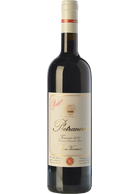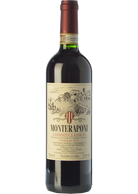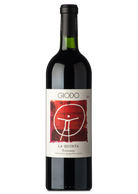Sangiovese
Studies indicate that the origins of the sangiovese variety are to be found in Tuscany and that its name probably comes from the words sanguis Jovis (Jupiter's blood). That first variety, which someone decided to honour by naming it after the King of the Gods, evolved over time in different ways leading to the numerous clones we know today and the variety of wines they create with significantly different characters. The traditional style of sangiovese wines expertly combines sweetness and bitterness, producing an aromatic profile of cherries and herbs which many people automatically associate with Italian wine. Styles more usually developed for international markets taste of blackberries and black plums and have a more noticeable mark of new wood.

Fattoria dei Barbi Brunello di Montalcino 2019

Castelgiocondo Brunello di Montalcino 2019





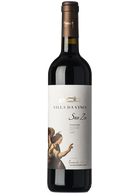

Bindi Sergardi I Colli Chianti Classico Riserva 2019

Le Pupille Morellino di Scansano Riserva 2021

Bindi Sergardi I Colli Chianti Cl. Ser Gardo 2021




Tenuta Perano Chianti Classico Riserva 2017


Il Poggione Brunello di Montalcino 2019



Livio Sassetti Pertimali Brunello di Montalcino 2019

Castelgiocondo Brunello Ris. Ripe al Convento 2015


Le Ripi Rosso di Montalcino Sogni e Follia 2019
BIO
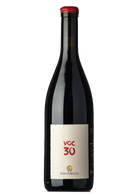
Sangiovese
Studies indicate that the origins of the sangiovese variety are to be found in Tuscany and that its name probably comes from the words sanguis Jovis (Jupiter's blood). That first variety, which someone decided to honour by naming it after the King of the Gods, evolved over time in different ways leading to the numerous clones we know today and the variety of wines they create with significantly different characters. The traditional style of sangiovese wines expertly combines sweetness and bitterness, producing an aromatic profile of cherries and herbs which many people automatically associate with Italian wine. Styles more usually developed for international markets taste of blackberries and black plums and have a more noticeable mark of new wood.
In general, Sangiovese stands out for its particularly rich acidity and tannins, and obviously for its important structure, although it is distinguished by an innate elegance that human intervention can further soften.
The land of choice for Sangiovese is certainly Tuscany, where it was known since the Etruscans, even if it is considered typical of all Central Italy, where it is the most cultivated grape. In Tuscany, Sangiovese is vinified as a single variety in Montalcino, where it gives life to Brunello DOCG, an almost mountain red that elevates to the nth power the qualities of this grape in terms of complexity, elegance and longevity. In Chianti Classico and in the wider area of Chianti and the surrounding appellations, it is increasingly vinified as a single variety as it goes hand in hand with the typical soils of the area, that marl and alberese limestone that give it texture, class and minerality. However, the typical Chianti requires, and is still practiced today, vinification with portions of canaiolo and colorino, which blunt the nervousness of young Sangiovese to bottle a more ready and soft product.
It must be said that, both in the Chianti area and in other less classic areas of Tuscan wine, sangiovese, even as a single variety but aged with international style (sometimes in barrique, sometimes new), gives life to many so-called Super Tuscans. These wines, in fact, can also be produced with the Bordeaux-style blend of Sangiovese and international grapes such as cabernet sauvignon and merlot; blends that admirably combine the international, full-bodied and herbaceous texture of the French with the true, acidic and tannic territoriality of the native. These practices also apply to Maremma wines, for which, from Bolgheri to Suvereto, from Bibbona to Scansano, both Sangiovese - here more mineral and Mediterranean, due to the soil and climate - and French grapes represent a fantastic discovery of the second half of the 20th century.
Outside the classic zone, Sangiovese expresses itself in an excellent way in Montepulciano, in the lower Siena area, where it gives life to Vino Nobile DOCG in its softer and velvety prugnolo gentile version, in Scansano, in the Grossetto area of Maremma, where it gives the elegant and graceful Morellino DOCG, and in the Montecucco Riserva DOCG area, just downstream from Montalcino. And that's not all: in Tuscany, sangiovese also delights lovers of sweet wines with the rare Occhio di Pernice del vinsanto version and, for frugal summer lunches based on cacciucco, with some intriguing and hearty rosés.
Outside of Tuscany, Sangiovese is widespread in Romagna, where, between Faenza, Imola and Forlì, and above all in the splendid Predappio cru, it gives life to wines that can lend themselves both to ready-to-drink wines and to the cellar reserve, with results that sometimes compete with the older Tuscan brothers. The same can be said of Umbria, where sangiovese is vinified in Chianti style in the area of Torgiano and in blends with Sagrantino in the area of Montefalco. In the Marche region, sangiovese can contribute, together with Montepulciano, to the production of Conero DOCG and Rosso Piceno DOC, expressing itself in general with good complexity but more marked softness.



